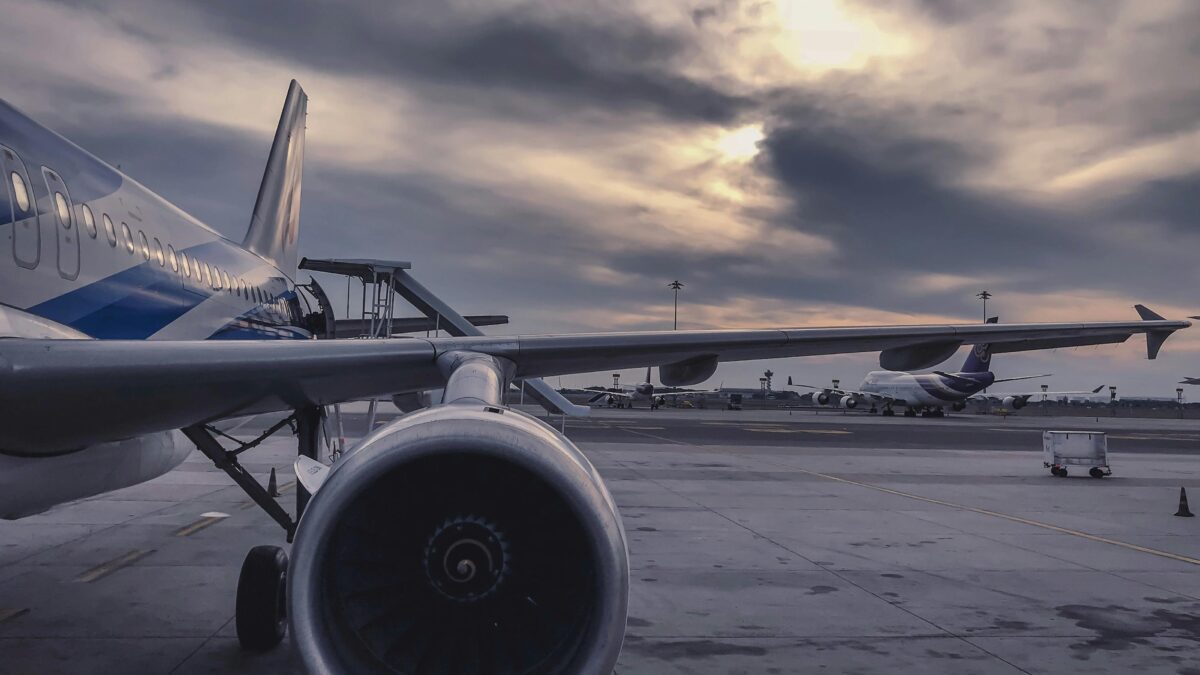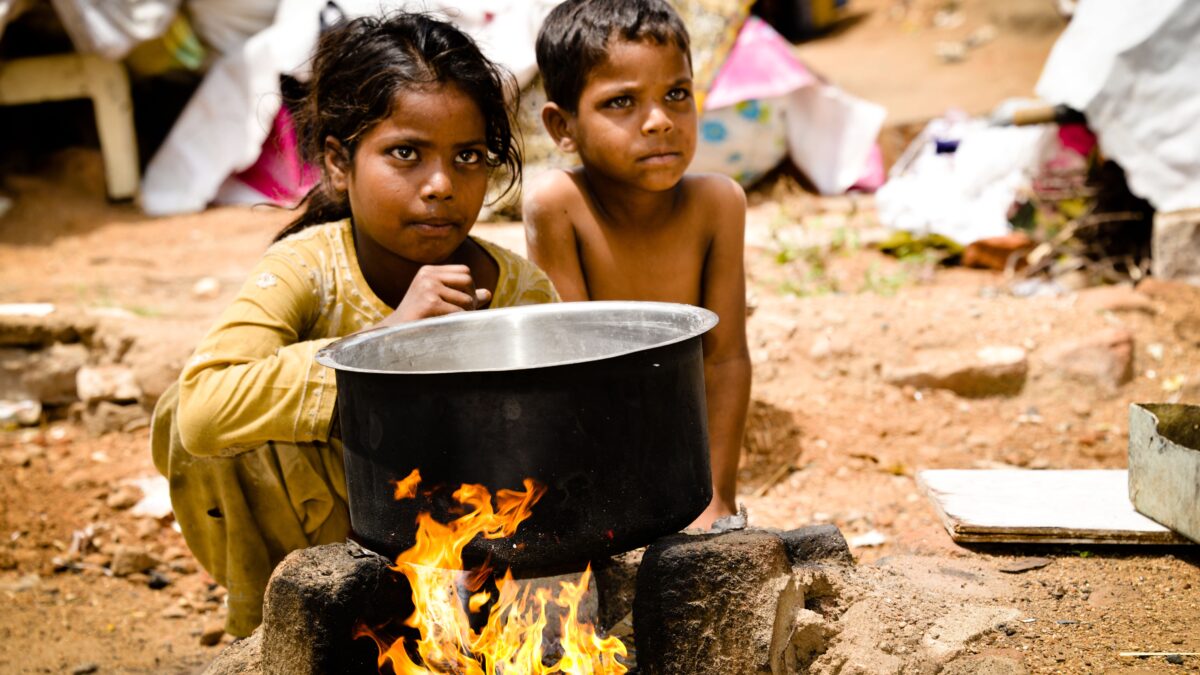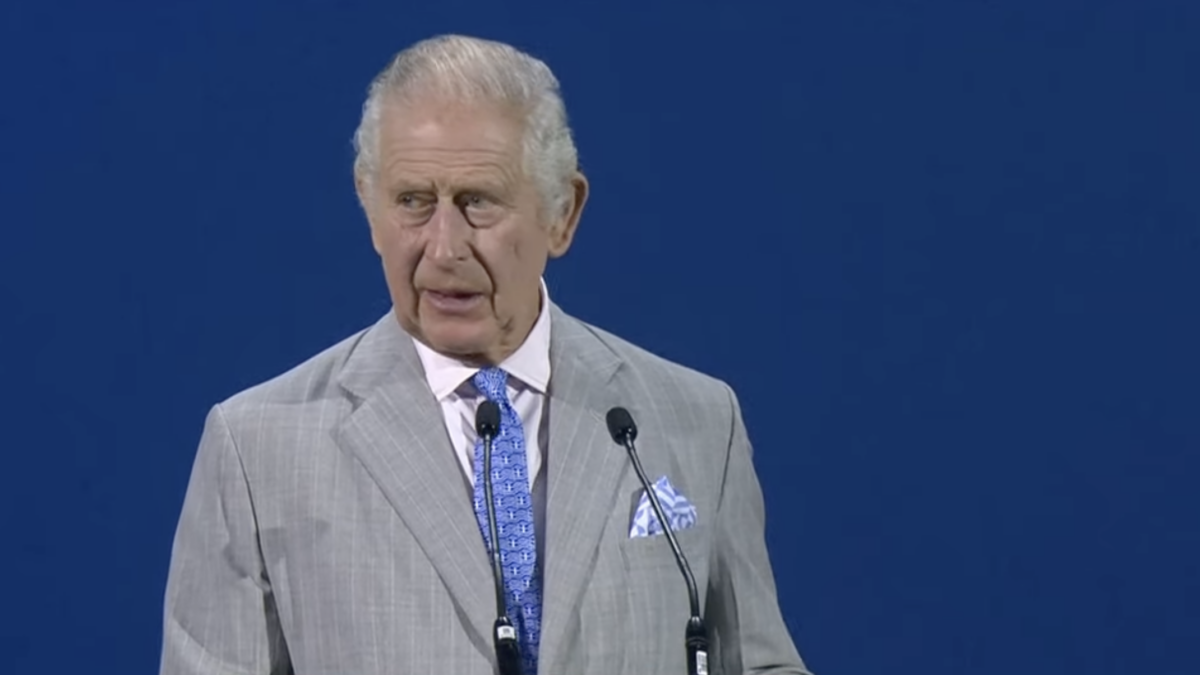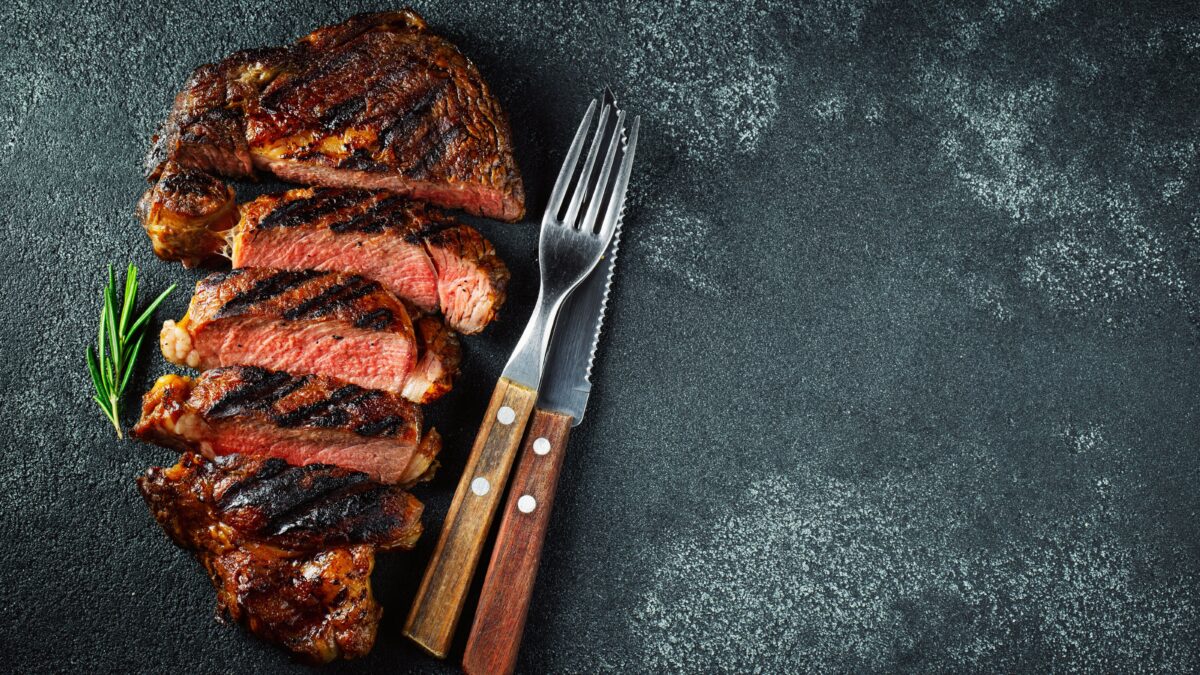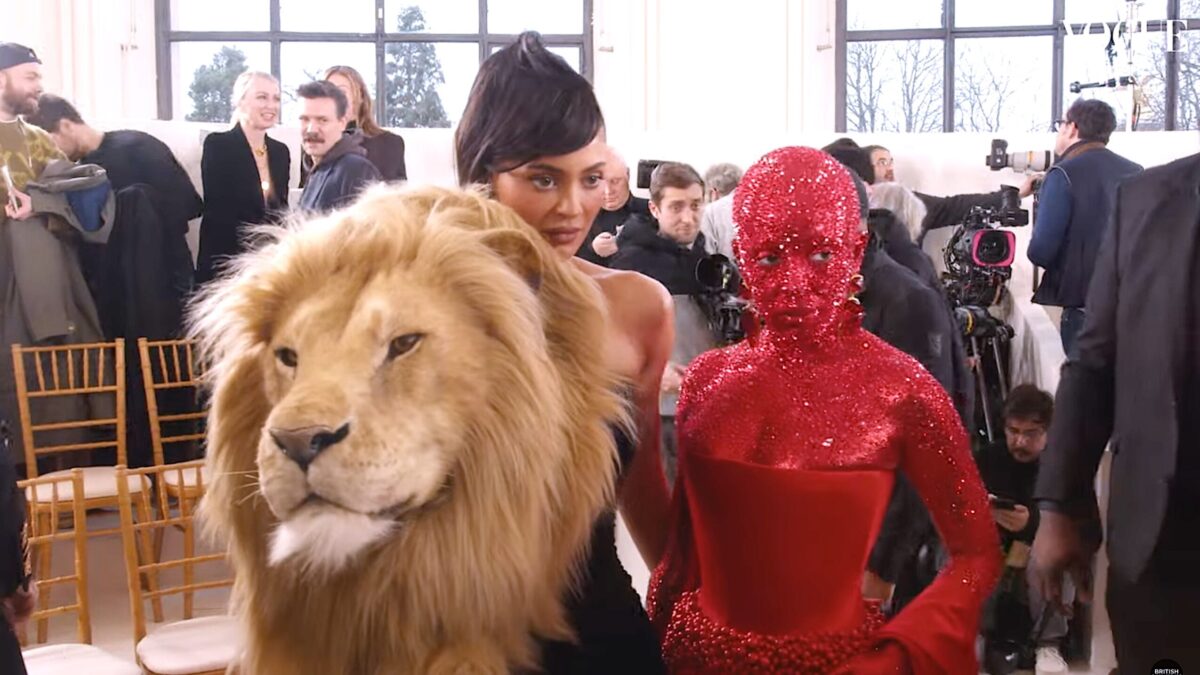
Seated in the front row at Schiaparelli’s couture runway during Paris Fashion Week, Kylie Jenner donned a strapless velvet black dress with a giant lion head attached to and covering most of her torso. Two seats from Jenner, Doja Cat wore a bright red satin corset, a detailed beaded skirt, knee-high boots, and 30,000 red Swarovski crystals, all over her outfit and body — including her eyelids.
Doja Cat was applauded by critics for “pushing boundaries” in fashion, while Kylie received mixed reviews from “slay” to “disturbing,” after some alleged her attire was promoting trophy hunting. However, the consensus from regular people outside the corporate media and fashion sphere went in an entirely different direction.
“This is ‘The Hunger Games,’” said one TikToker, showing pictures of Jenner and Doja Cat, explaining that “the rich and the elites [are showing] blatant, grotesque forms of wealth while common people are being pitted against each other for their own entertainment because they’re bored.”
“Like, we get it, we’re all crying about paying $10 for eggs while y’all play dress up,” stated another.
Video after video likens our current celebrity class to the greedy, maximalist-dressed elites living in the fictional capital of Panem (the country where the “Hunger Games” series takes place), and parallels the impoverished and oppressed peasants in the book to everyday Americans.
Celebrities have always strutted around at fashion shows and galas in extravagant costumes that are as costly as they are absurd, but the divide between the rich and poor is becoming more prominent as the middle class continues to shrink. Americans, and Westerners in general, are struggling to make ends meet thanks to the globalist climate agenda supported by the very celebrities prancing around at Fashion Week.
The climate agenda has sparked a catastrophic cost of living crisis across the globe. Powerful celebrities and business elites alike have joined forces with the World Economic Forum in pushing Western governments to redistribute their wealth and transition their economies away from relying on coal, oil, and natural gas, and instead depend on insufficient supplies of green energy.
To add insult to injury, the people who want us to eat bugs and throw out our gas stoves are the same ones gallivanting to climate conferences in Switzerland and Egypt in private jets.
Not only do climate fanatics have massive carbon footprints and promote policies that impoverish people, but their methods are also actively harmful to the environment. The best way to promote environmental stewardship and mitigate human impact on the Earth is for people to be wealthy enough to be able to prioritize the environment. Yet driving up the cost of living is doing the exact opposite: it’s annihilating the middle class and making the poor poorer.
The modern celebrity class has completely abandoned the concept of “noblesse oblige,” which stipulates that the rich and powerful have a responsibility to aid the less fortunate. Instead of investing in people, the world’s elites often invest in their “climate” fantasies, which hurt the poor.
Bill Gates has spent billions in Africa trying to squelch the birth rates of black women in the name of “climate change.” But large families act as a safety net for many non-Westerners since they rely heavily on family members to care for them in old age. Already the United States, parts of Europe, and Japan are suffering from a birth rate crisis that is going to have deeply negative effects on the economy and consequently the environment in the future.
This year’s Fashion Week outfits didn’t “slay.” They are symbolic of the growing and troubling divide between average families and the out-of-touch snobs who wish for us to own nothing and be happy about it.


